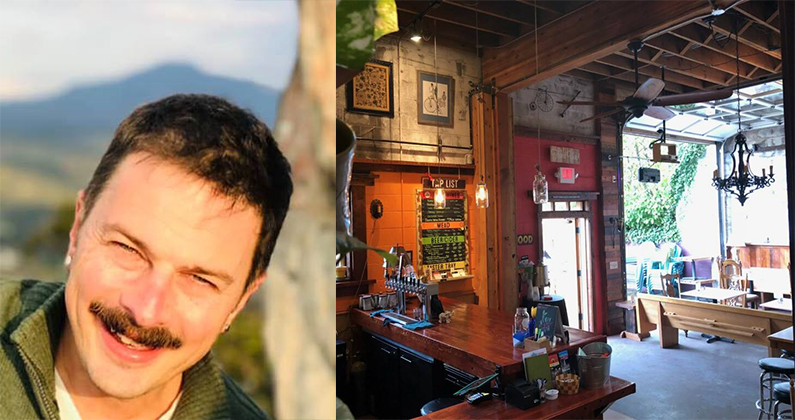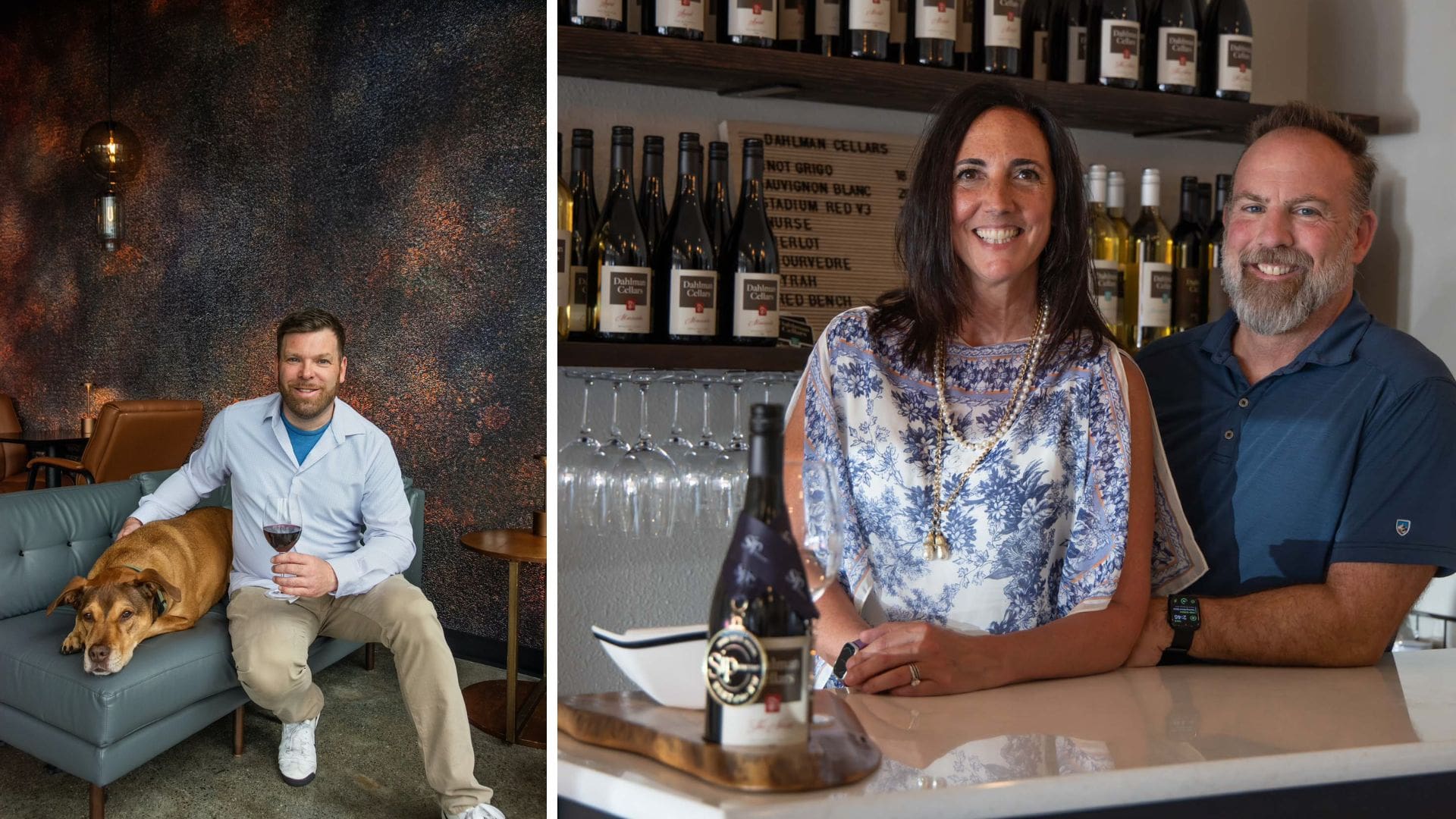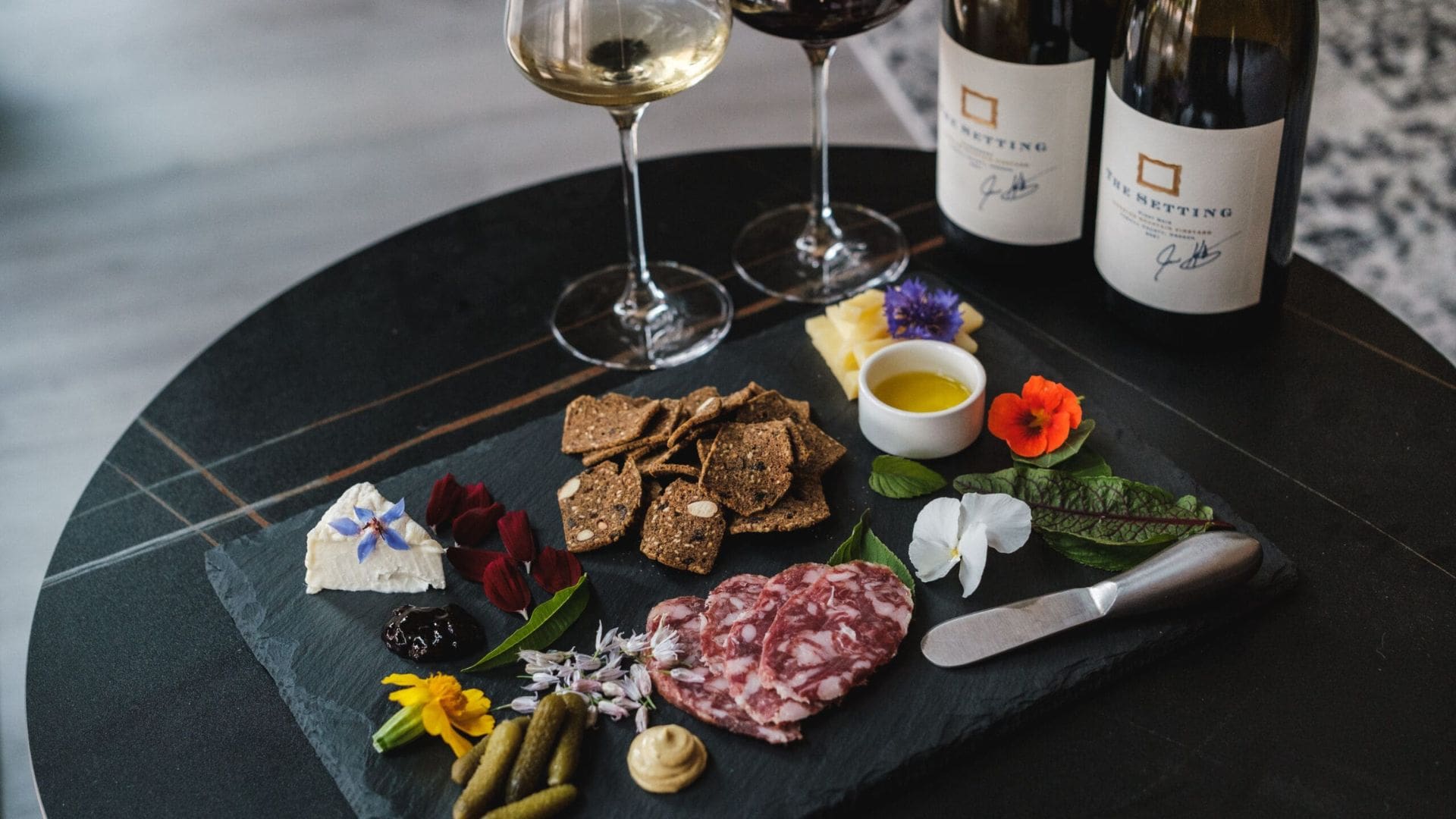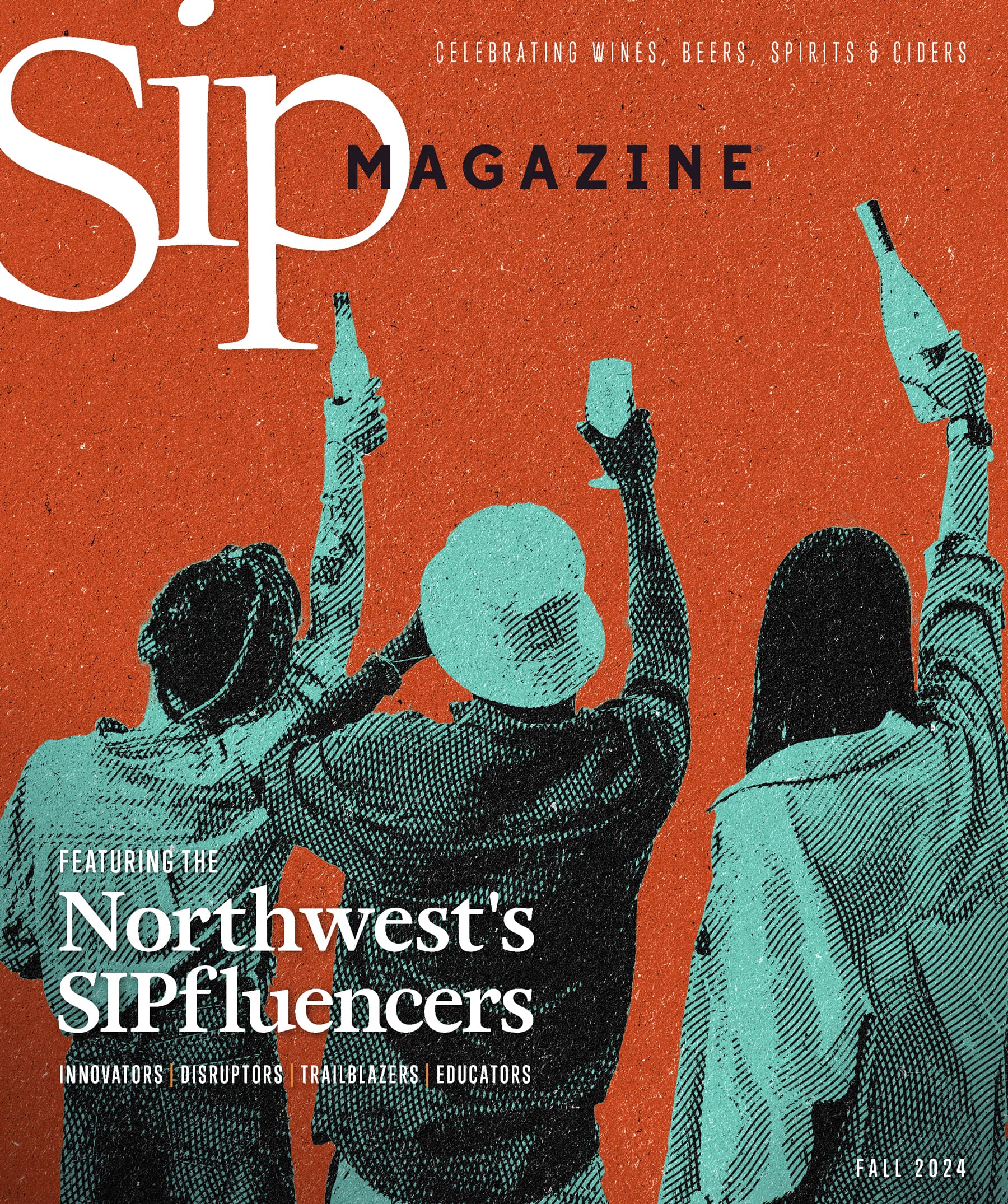Fizzy wine, as made by Ken Bonnin, Jr., owner and winemaker at Hi-Wheel Fizzy Wine Co., is defined by what it’s not as much as what it is.
Bonnin originally called his fermented fruit juice “citrus cider,” but he’s not fermenting apples — so, technically speaking, it’s not cider. And while “wine” is part of the name, the beverage doesn’t use grapes. Rather, Bonnin blends fermented lemon, lime and grapefruit juice with a creative mix of fruit and culinary herbs and spices, including lavender, raspberries, mint, habaneros and blackberries.
The end result is fizzy wine — or as Bonnin likes to call it, “adult lemonade.”
Bonnin made his first batch of the sweet, yet refreshing beverage more than a decade ago and opened the flagship Hi-Wheel taproom in Northeast Portland in October 2014. Nearly five years later, the eclectic tap list at Hi-Wheel may include, at any given time, fizzy wines made with ginger and lemon, apricot and thyme, or blood orange, ginger and wasabi.
Bonnin spoke with Sip Northwest about the accidental inspiration behind fizzy wine, how he came up with the term and what’s next for Hi-Wheel.
1) How did you start making fizzy wine?
Awhile back, I had a party and I had a whole bowl of leftover citrus — grapefruit, lemon and lime. I chopped them all up and found a recipe for marmalade, but instead of marmalade, I wound up with six quarts of this citrus syrup with whole fruit chopped up in it. It was freaking delicious, but there were only so many pancakes I was going to eat, right?
So I found this recipe online; someone said to take a bottle of jam, add some water to it and throw in some yeast. And I went, “Oh, that’s kind of weird, but alright.” I took all this marmalade, dumped it in a pot, added some water, threw in some yeast and it fermented! It turned into a citrus wine. It was freaking fantastic. So that’s kind of what got me thinking about fermenting citrus.
The first batch was grapefruit and I really liked that. And then I made a batch with lemon and I thought, “Lemon is nice, but what goes good with lemon?” I looked in my cupboard, and there was some lavender essence, so I poured some in and voila! And then I fermented some lime and I said, “Why don’t we add some heat to it?” So I went and got some habanero sauce at the store, dumped it in, stirred it in and thought it was great.
2) When did you know you were onto something with the drink?
I’m a longtime Burner, I’ve been going to Burning Man since 2001. I used to homebrew and bring it to the playa, but bringing beer and trying to keep it cold and carbonated was kind of a pain. I didn’t call it fizzy wine but I started making these citrus beverages and I decided to bring one to Burning Man in 2011.
So I made one, carbonated it, brought it to the playa and people went bananas for it. So the next year, my camp asked if I could make some more and I said, “Sure.” And then the next year, my camp said to make some more. And it just took off.
3) Where did the term “fizzy wine” come from?
I literally didn’t have a name for it; I wanted to call it citrus cider. I knew a wine product, people would think red or white, and I didn’t want to compete in that space. But I knew I wanted to create a sessionable beverage that could be put on tap and could also be bottled. So I wanted to call it citrus cider, but the law said I could not call it cider, because it doesn’t have apples in it.
So people asked, “What do you call it?” And I said, “Uh, it’s fizzy!” So somebody goes, “It’s wine, right? It’s fizzy … wine?” So I’m like, “Great, that’s the name. Let’s call it fizzy wine.”
4) What’s on the horizon for Hi-Wheel?
When I started packaging, I chose glass bottles because I really wanted people to see the product, and I chose 500-milliliter bottles, just because. But the market is heading heavily toward four- and six-packs of 12- or 16-ounce cans, so we’re working with a couple different canning companies and we’re planning on launching in the late summer or early fall our first line of canned fizzy wine.







